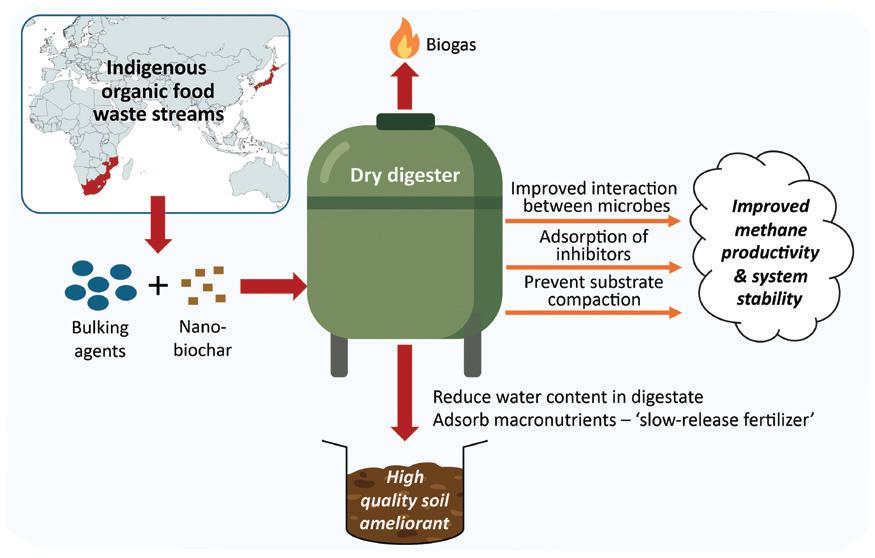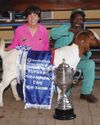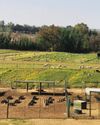Intentar ORO - Gratis
Dry anaerobic digestion: A sustainable, water-wise, waste-to-energy solution
Stockfarm
|November 2025
Imagine an ideal world where cattle manure, crop waste and food scraps do not end up accumulating in landfills but are used to light up homes, cook meals, heat schools, and fertilise gardens.

This is not a far-fetched idea thanks to dry anaerobic digestion or AD, a clean, sustainable technology that is rapidly gaining recognition and momentum worldwide.
From rural villages in South Africa to high-tech farms in Japan, dry AD is proving to be a catalyst in the fight against waste accumulation, climate change, energy poverty, and reliance on fossil-fuel derived energy and chemical fertilisers.
Anaerobic digestion explained
Dry AD is a natural process that occurs in the absence of oxygen, whereby special microorganisms, including bacteria and archaea, break down organic matter such as animal manure, food waste, and crop residues. The products of this process are biogas and digestate. Biogas is a renewable energy source rich in methane that can be burned for cooking, heating, and even electricity generation. The semisolid material produced during the process is referred to as digestate, which is nutrient-rich and ideal for agricultural applications.
Anaerobic digestion is classified as wet or dry, based on the amount of solids in the system. Unlike traditional wet AD, dry AD works with waste that has a much higher solid content (15 to 45%). This means it requires substantially less water, thus providing a huge advantage in water-scarce regions.
Let's explore how dry AD may be adopted in South Africa, Mozambique, and Japan. These three very different countries are united by one common goal, namely turning waste into treasure in a water-wise manner.
South Africa: Empowering rural communities by tackling waste management and energy poverty
Esta historia es de la edición November 2025 de Stockfarm.
Suscríbete a Magzter GOLD para acceder a miles de historias premium seleccionadas y a más de 9000 revistas y periódicos.
¿Ya eres suscriptor? Iniciar sesión
MÁS HISTORIAS DE Stockfarm

Stockfarm
Boer goat management: Dosing for success
Boer goats were bred for South African conditions, making them hardy and well-adapted. However, like sheep, they still need to be dosed against parasites.
2 mins
November 2025
Stockfarm
Understanding the difference between inbreeding and linebreeding
The distinction between inbreeding and linebreeding is often confusing. A common misconception is that successful outcomes are attributed to linebreeding, whereas failures are blamed on inbreeding. Another inaccurate belief is that inbreeding refers to sibling matings (for example brother and sister), whereas linebreeding involves parent-offspring pairings. In reality, both scenarios are incorrect and should never be pursued intentionally due to its potentially serious genetic consequences.
2 mins
November 2025

Stockfarm
Dry anaerobic digestion: A sustainable, water-wise, waste-to-energy solution
Imagine an ideal world where cattle manure, crop waste and food scraps do not end up accumulating in landfills but are used to light up homes, cook meals, heat schools, and fertilise gardens.
4 mins
November 2025

Stockfarm
Is the 'second bite' really so bad?
One of the most common misconceptions among grazing managers is that allowing animals to graze grass regrowth is harmful, says Richard Fynn, professor of Rangeland Science at the Okavango Research Institute, University of Botswana.
4 mins
November 2025

Stockfarm
2025 Toyota SA National Young Auctioneer crowned
The winner of Plaas Media's Toyota SA National Young Auctioneer Competition was crowned on 12 September at NAMPO Cape in Bredasdorp. Five top aspiring auctioneers vied for the title, but it was Toog Vermaak who walked away with the honours. This marked the twelfth edition of the competition, with Toyota SA proudly serving as the name sponsor since its inception.
1 mins
November 2025
Stockfarm
Labour dynamics in South Africa's agricultural sector
Statistics South Africa's Labour Force Survey for the second quarter of 2025 released in August, estimates that around 16,8 million people were employed at that time. This represents an increase of approximately 0,9% (around 154 000 people) compared to last year. The unemployment rate is estimated at 33,2%, down 0,3% from a year earlier, but 0,3% higher than in the first quarter of 2025. Including discouraged job seekers, the broad unemployment rate stands at 42,9%.
5 mins
November 2025

Stockfarm
Boer goat management: Dosing for success
Boer goats were bred for South African conditions, making them hardy and well-adapted. However, like sheep, they still need to be dosed against parasites.
2 mins
November 2025
Stockfarm
Installation of electricity to improve farm dwellings
The Supreme Court of Appeal has upheld a Land Court ruling in Sibanyoni family vs Van der Merwe (the Sibanyoni case) namely that farm dwellers' right - as defined in the Extension of Security of Tenure Act, 1997 (Act 62 of 1997) (ESTA) – to improve their dwellings includes the right to have electricity installed.
2 mins
November 2025

Stockfarm
An integrated enterprise on a small piece of land
Hennie and Liza-Mari Jonker manage a highly productive 6,6ha farm outside Kroonstad, where they farm more than 800 sheep, 1 500 laying hens, two dozen Boer goats, and a flock of Damara sheep – all with the goal of living as self-sufficiently as possible.
5 mins
November 2025
Stockfarm
Importance of standardised testing in accurate genetic evaluation
In recent years, the beef breeding industry has witnessed a surge in private performance testing service providers catering to cattle breeders. This makes it more important than ever to emphasise the value of standardised performance testing procedures at testing centres. Such standards ensure that tests are scientifically sound, that the collected data is reliable, and that the results add value to breeders' selection decisions while benefiting the national beef industry.
2 mins
November 2025
Listen
Translate
Change font size

